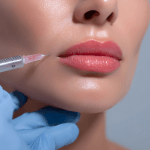Neurotoxin injections are common in aesthetic and therapeutic care. They are also high-visibility treatments, where small changes can feel big. For clinic teams, botox side effects questions usually arrive as time-based concerns: what is normal today, and what is not. A clear, label-aligned framework helps you triage calls, document appropriately, and set expectations without overpromising.
This guide focuses on operationally useful patterns. It organizes typical local reactions, less common systemic symptoms, and the “internet narratives” you will hear from patients. It also highlights where photos can mislead, and what to standardize in your workflow.
Key Takeaways
- Expect predictable timing: many reactions cluster in the first week.
- Separate local vs systemic: track spread-of-toxin warning symptoms.
- Photos are incomplete: images rarely capture function or baseline asymmetry.
- Standardize documentation: lot details and counseling notes reduce ambiguity later.
MedWholesaleSupplies supplies only licensed clinics and healthcare professionals.
botox side effects: What Clinics Should Track
When patients say “side effects,” they may mean anything from a small injection-site bruise to an unwanted change in expression. Your intake and follow-up forms work best when they separate: (1) expected local reactions, (2) injection-pattern effects (often technique- or placement-related), and (3) symptoms that could signal systemic exposure or an unrelated illness.
Start by naming the product class clearly. Many patients use “Botox” as shorthand for botulinum toxin type A injections. In your records, keep the exact product name, the indication, and the injection map. If you need a refresher on documenting anatomy by region, see Botox Injection Sites.
Local reactions vs systemic symptoms
Local reactions are usually limited to the treated area. They can include injection-site pain, tenderness, erythema (skin redness), swelling, or bruising. Patients may also report a “tight” or “heavy” feeling as targeted muscles relax, especially in the forehead. Technique, needle choice, anticoagulant use, and baseline skin fragility can influence bruising risk. These events are often self-limited, but they still deserve consistent documentation.
Systemic symptoms are different. They may include generalized weakness, dysphagia (trouble swallowing), dyspnea (trouble breathing), or voice changes. Product labeling for botulinum toxin products includes warnings about distant spread of toxin effect. Clinics should treat these reports as high-priority communications and follow their escalation pathways and the official prescribing information.
For teams building patient education scripts, Injectables Top Questions is a useful starting point for common wording.
Timing Patterns: Onset, Peak, and Resolution
Many calls can be resolved by mapping symptoms to expected timing. Patients commonly search “when do botox side effects appear” and “when do botox side effects go away,” but they rarely describe timing precisely. Intake prompts should capture: date/time of injection, symptom start, progression, and any new meds or intercurrent illness.
Set expectations that timing varies with patient factors, injection pattern, and product. Also separate “treatment effect timing” (when muscle weakening becomes noticeable) from “reaction timing” (bruising, headache, soreness). For a broader discussion of effect duration, see Duration Of Botox Effects.
| Symptom pattern | Common category | Operational next step |
|---|---|---|
| Bruising, tenderness, mild swelling | Injection-site reaction | Document location, size, and onset; provide standard aftercare handout. |
| Headache or pressure sensation | Peri-procedural or tension-related | Confirm timing and neuro symptoms; log severity and functional impact. |
| Droop, asymmetry, unwanted expression change | Injection-pattern effect | Compare with baseline photos; review injection map and counseling notes. |
| Generalized weakness, dysphagia, dyspnea | Potential systemic concern | Escalate per protocol; reference the product’s prescribing information. |
When does “Botox flu” start?
Some patients describe malaise, fatigue, and body aches as “Botox flu.” You may also see searches like “when does botox flu start” and “how long does botox fatigue last.” These symptoms are nonspecific. They can overlap with dehydration, viral illness, migraine patterns, or anxiety after a procedure. From a clinic standpoint, the key is structured assessment: onset relative to injection, presence of fever, focal neurologic symptoms, breathing or swallowing concerns, and any concurrent respiratory illness in the household or workplace.
If multiple patients report similar nonspecific symptoms on the same day, treat it as a signal to review reconstitution practices, handling, and documentation consistency. Also confirm that staff are using current labeling and storage requirements. See Botox Storage Temperature and Store Neurotoxin Products for operational reminders.
Inventory is authentic, brand-name medical product for professional use.
Patient Selection and Common Reasons to Defer
Clinics often see “reasons not to get botox” framed as a consumer checklist. In practice, it is a patient-selection and risk-screening workflow. Build a consistent pre-treatment review that captures neuromuscular disorders, prior adverse reactions, active infection at or near injection sites, and pregnancy or lactation status where relevant to your policies and labeling.
Also screen for baseline asymmetry, eyelid position, and compensatory muscle recruitment. These factors do not necessarily preclude treatment, but they influence counseling and the way patients interpret results. “Bad botox pictures before and after” posts often reflect missing baseline documentation rather than a single procedural error.
Set boundaries around expectation management. Patients may pursue aggressive outcomes, especially for forehead lines. A neutral script helps: describe possible trade-offs (movement reduction vs expression change) and emphasize that results are individualized. When you align your counseling to your charting templates, your follow-up decisions become easier to defend and repeat.
Longer-Term Questions: Neurologic Concerns and Repeated Use
Patients increasingly ask about botox long-term side effects, especially after years of intermittent treatments. Your role is to stay close to the product label and to avoid speculation. Long-term experience exists across multiple indications, but individual risk depends on patient comorbidities, total exposure, and injection patterns.
Queries about botox neurological side effects and botox neurological side effects long-term deserve careful triage. Many neurologic symptoms reported online are nonspecific, and some are unrelated to injections. Still, botulinum toxin products carry warnings about distant spread of toxin effects, and serious events can occur. Operationally, you want a high-reliability pathway for rapid escalation, documentation, and adverse event reporting when appropriate.
Another common search is “can botox cause cancer.” Cancer is not a typical labeled adverse reaction category for botulinum toxin products, and these injections are not generally discussed as carcinogenic exposures. Still, your safest response is conservative: acknowledge uncertainty in public discourse, cite the prescribing information, and recommend that clinicians use the approved labeling and current evidence summaries when counseling.
Forehead Effects and the Limits of Photos
Forehead cases generate the most image-based questions. Patients search “botox side effects pictures,” “facial botox side effects pictures,” and even “side effects of botox on forehead pictures.” Photos can help, but they are a narrow slice of reality. Lighting, angle, and facial effort can exaggerate asymmetry. They also miss function, like brow heaviness during reading or screen work.
When people ask about “long-term botox side effects pictures” or “long term side effects of botox on forehead,” they often want proof that a symptom is “real.” Use baseline, standardized photos and brief functional notes instead. For example: resting brow position, brow elevation effort, eyelid symmetry, and headache history. If you frequently field post-procedure headache calls in forehead cases, Post-Botox Headaches provides context for common patterns and documentation tips.
Include language that normalizes mild asymmetry. Faces are not symmetric at baseline. Without pre-treatment photos, patients may attribute long-standing differences to the injection. This is a common driver of “bad botox pictures before and after” comparisons.
Making Sense of Social Media and Reddit Narratives
Clinics now compete with screenshots. Searches like “botox side effects reddit” and even “botox ruined my life reddit” often reflect fear after a normal, transient reaction. They can also reflect frustration with poor communication. A short, non-defensive call script can reduce escalation: validate symptoms, capture timing, and offer a structured follow-up plan consistent with your protocols.
Why it matters: Unstructured reassurance can be misread as dismissal in later disputes.
Operationally, treat online narratives as a signal to improve your own information design. Provide a one-page handout that separates expected local reactions, expected treatment-effect timing, and clear red flags. Pair it with a documented counseling note and a follow-up touchpoint. When patients ask, “when do botox side effects go away on forehead,” avoid guaranteeing timelines. Instead, document what they report today and what you will reassess at the next contact.
Also address terminology confusion. “Hair Botox” is typically a salon term for a conditioning or smoothing treatment, not a botulinum toxin injection. People searching “hair botox side effects,” “hair botox side effects hair loss,” or “hair botox treatment reviews” may be mixing categories. If your clinic receives these questions, clarify the difference and redirect to the appropriate provider type. Avoid presenting hair-care complications as neurotoxin adverse events.
Clinic Workflow Snapshot and Documentation Checklist
A repeatable workflow reduces variability, especially when different clinicians inject on different days. It also improves traceability if a patient reports symptoms later. If you run multiple sites, standardization matters more than perfect phrasing. In many practices, this is also where procurement and storage decisions intersect with clinical documentation.
Quick tip: Keep the injection map and counseling note in the same encounter record.
For clinics that rely on US distribution, align receiving logs with clinical record fields. This helps staff avoid “missing lot” follow-ups. The goal is not bureaucracy. It is clarity when questions arise about botox side effects weeks later.
Documentation checklist (clinic-facing)
- Product identification: exact name and presentation.
- Lot details: lot number and expiration date.
- Handling notes: storage conditions per label.
- Indication: cosmetic vs therapeutic context.
- Injection map: sites and total units documented.
- Baseline record: standardized photos and asymmetry notes.
- Counseling: expected timing and red-flag symptoms.
- Follow-up plan: who calls, and when.
Supply channels rely on vetted distributors rather than informal resellers.
Comparing Toxin Options Without Overpromising
Patients often assume all products behave identically. Clinics know operational differences can matter: preparation steps, storage requirements, staff familiarity, and how you standardize consent language. Keep comparisons grounded in approved labeling and published professional education resources. Avoid “best” language, and avoid implying that one product eliminates adverse reactions.
If you maintain multiple options, consider documenting a small set of workflow decision factors: staff training needs, storage constraints, and how you manage substitution policies. Internal training can reference product-specific resources like Botox Vs Dysport Analysis, Xeomin And Botox Comparison, and Xeomin Vs Dysport.
For sourcing organization, it can help to keep a single internal reference point such as the Botox Category hub, plus product records for BOTOX Product Page, Dysport Product Page, and Xeomin Product Page. The goal is consistent naming and documentation, not conversion.
If your practice treats cervical complaints, staff may also benefit from the anatomy and counseling considerations in Understanding Neck Botox.
When logistics are stable, patient communication is easier. Reliable US logistics can support predictable internal stocking routines, but your policies should remain label-driven and site-specific.
Authoritative Sources
When counseling or building protocols, prioritize primary sources. For botulinum toxin products, that means the FDA-approved prescribing information and any boxed warnings, contraindications, and adverse reaction tables. Use those documents to shape your red-flag scripts, your documentation fields, and your escalation thresholds.
For pharmacovigilance, ensure staff know where to locate the most current label and how to report suspected adverse events through your standard channels. If you operate multiple products, keep each product’s label accessible in your clinical governance folder.
Further reading: Use your baseline photo protocol, counseling script, and follow-up template as one connected system.
This content is for informational purposes only and is not a substitute for professional medical advice.






